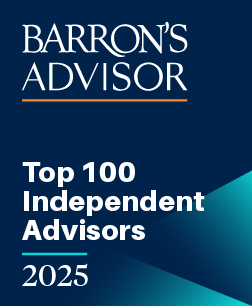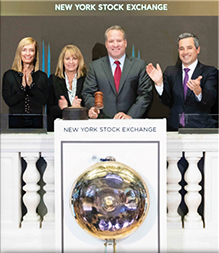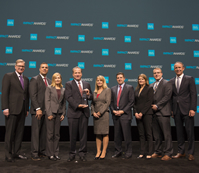The SECURE Act 2.0, passed in the very last week of 2022, has provided a few opportunities regarding tax-sheltered savings vehicles and how we use them. Most people have already heard about the Required Beginning Date (RBD) for Required Minimum Distributions (RMD) being pushed out to age 73, for those born before 1960 who have yet to start taking RMDs, and to age 75, for those born 1960 or after. However, there are two less talked about financial benefits provided by the SECURE Act 2.0: funding 529 plans for other than educational purposes and using tax-free IRA distributions to generate lifetime income.
529 PLANS NOT USED FOR EDUCATION
The first new treatment of tax-sheltered savings relates to 529 plans funded for educational expenses. Beginning in 2024, the SECURE Act 2.0 gives a 529 plan beneficiary the ability to transfer 529 plan funds, not used for the original intent of funding education, into their own Roth IRA without paying taxes or penalties. The new rule allows for up to $35,000 of excess funds to be rolled into a Roth IRA for the beneficiary over their lifetime. Note that the beneficiary is the student the plan was established for, not the funding account owner.
There are a few caveats when considering rolling excess funds into a Roth IRA account. The 529 plan must have been open for at least 15 years prior to the rollover. There are no required minimums to fund a 529 plan, as little as $25 today will start the 15-year timeline. In addition, no contributions or earnings accumulated in the five years prior to the rollover can be included in the transfer. The eligible amount of any transfer is also subject to the limitation of the beneficiary’s annual contribution limits (currently $6,500 for anyone under age 50). Unlike normal Roth contributions, there is NO upper-income constraint.
This represents a great opportunity to save for college without having to commit to using all the funds for that purpose, while potentially providing Roth IRA funding for a child who may not have the earned income to qualify for the usual, traditional Roth contribution.
MAKING TAX-FREE IRA DISTRIBUTIONS WITH A QCD AND GETTING INCOME FOR LIFE
The second notable change in the treatment of tax-sheltered savings provides the opportunity to take tax-free distributions from an IRA, under certain circumstances, that could potentially generate lifetime income. Qualified Charitable Distributions (QCD) are used by many of our clients to help meet their IRA’s Required Minimum Distribution (RMD) without incurring taxes. A QCD requires the IRA custodian to distribute funds payable directly to a charity of the account holder’s choice. The SECURE Act 2.0 specifies that a QCD may now, starting in 2023, be made payable to a “split-interest” entity, such as a Charitable Remainder Trust (CRT) or a Charitable Gift Annuity (CGA), which can generate lifelong income.
Once again, there are some qualifiers and limitations in place. The account holder must be age 70½ to designate a QCD withdrawal from their account. In addition, funding a Charitable Remainder Trust or Charitable Gift Annuity is limited to a one-time transfer of up to $50,000, with the entire amount being from the QCD. Note that while an individual can exclude up to $100,000 from income via a QCD, the limit for gifting a “split-interest” entity is only $50,000. However, if both spouses are over age 70½, each can contribute up to $50,000 from their respective IRAs to fund a joint-life CGA.
QCDs cannot be made to donor-advised fund sponsors, private foundations, or supporting organizations, though these may be categorized as charities. Donors should check to ensure the organization is indeed qualified to accept QCDs before making the gift.
As always, it is important to consult a tax or investment professional before making these important decisions.
Click here to read more of my RetireMint articles. Follow me on Twitter.
This document is for educational and informational purposes only and does not constitute an advertisement or solicitation of any securities or investment services provided Mainstay Capital Management, LLC (“MCM”). This document should not be construed as investment, tax, or legal advice, or a solicitation, or a recommendation to engage in any specific strategy. MCM is an independent investment adviser registered with U.S. Securities and Exchange Commission. MCM specializes in workplace savings plan portfolio management and retirement planning advice for active employees and retirees. This document was prepared by MCM primarily based on data collected and analyzed by MCM. The opinions expressed herein are those of MCM alone and are for background purposes only. MCM does not purport the analysis to be full or complete or to constitute investment advice and should not be relied on. In addition, certain information contained herein or utilized to draw the conclusions contained herein has been provided by, or obtained from, third party sources. While MCM believes that such sources are reliable, it cannot guarantee the accuracy of any such information and does not represent that such information is accurate or complete. All materials and information are provided “as is” without any express or implied warranties by MCM. MCM charges its fee based on a percentage of assets under management, which creates an incentive and conflict of interest to increase assets in that account. Furthermore, MCM has two different fee schedules, and therefore has a conflict of interest when assets or accounts move from the lower fee schedule to the higher fee schedule. Opinions expressed are subject to change without notice and are not intended as investment advice or to predict future performance. Consult your financial professional before making any investment decision. Please see MCM’s Form ADV Part 2A and Form CRS for additional information.







